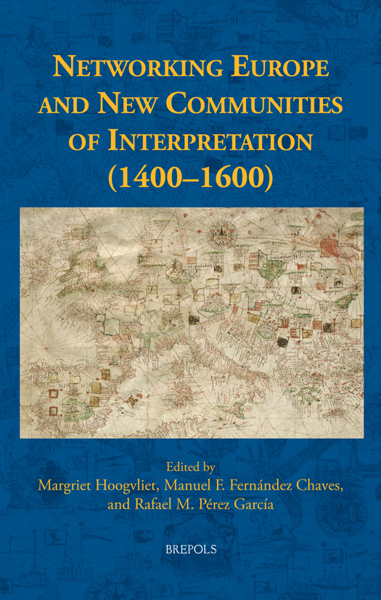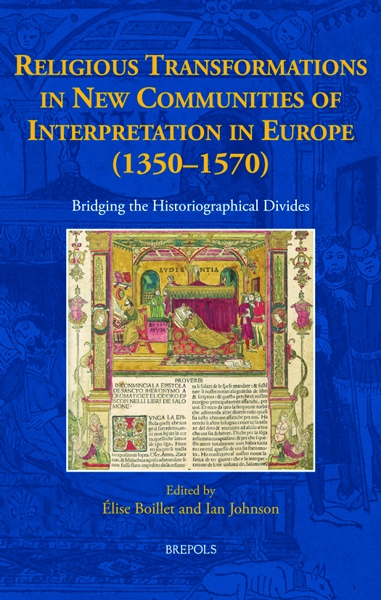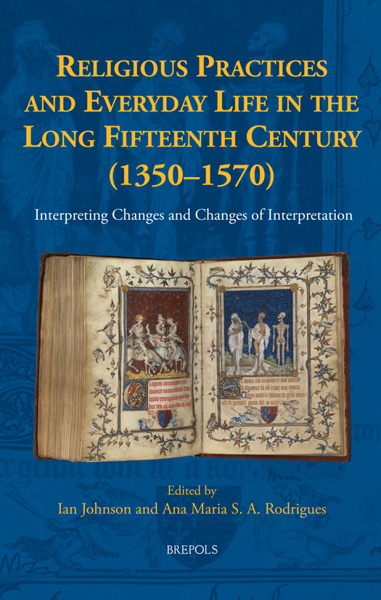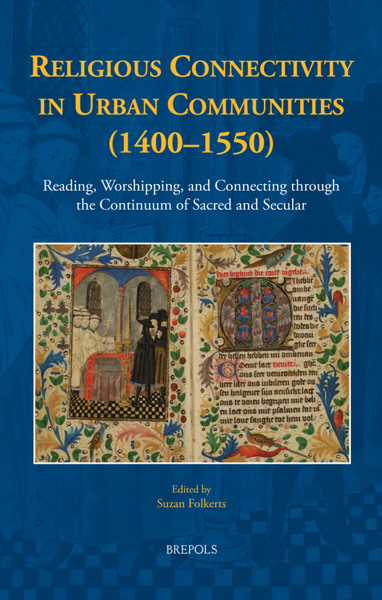
Religious Transformations in New Communities of Interpretation in Europe (1350–1570)
Bridging the Historiographical Divides
Élise Boillet, Ian Johnson (eds)
- Pages: 275 p.
- Size:156 x 234 mm
- Language(s):English
- Publication Year:2023
- € 85,00 EXCL. VAT RETAIL PRICE
- ISBN: 978-2-503-60177-9
- Hardback
- Available
- € 85,00 EXCL. VAT RETAIL PRICE
- ISBN: 978-2-503-60178-6
- E-book
- Available
Bridging national, cultural, linguistic, social, religious, sectarian, and historical divides in the ‘long fifteenth century’
“It is this cohesive breadth that lends it to be a valuable and fascinating study for medieval and early modern scholars alike. (…) Religious Transformations is recommended for scholars with interests ranging from recusancy and exile, the Hussites and the Bogomils, to evangelism in Lesser Poland, as well as medievalists or early modernists hoping to become more acquainted with each other’s research.” (Grace May Howe, in Parergon, 41/1, 2024, p. 308)
"(...) Bieten die hier abgedruckten zwölf Beiträge, die auf ein internationales Kolloquium in Tours von 2015 zurückgehen, erfrischend neue Perspek>tiven zum Untersuchungsgegenstand, der sich mit den Kontexten, Strategien und Prozessen der religiösen Transformation im spätmittelalterlichen und frühneuzeitlichen Europa zwischen 1350 und 1570. (...) Auch der dritte Band demonstriert somit innerhalb des Generalthemas des religiösen Wandels in Spätmittelalter und Frühneuzeit eine beachtliche inhaltliche Vielfalt an Erscheinungsformen und methodischen Herangehensweisen, was zweifellos die weitere Forschung inspirieren wird..." (Thomas Krzenck, in Zeitschrift der Savigny-Gesellschaft für Rechtsgeschichte, Kanonistische Abteilung, 110, 2024)
"The result is a challenging range of materials and approaches, presented from often strongly interdisciplinary perspectives. For all these reasons, this volume stands as a collection that will be not only useful as a whole, but also for its individual contributions. The concrete examples in these essays will help both newcomers and specialists see more clearly the richness and diverse possibilities of studying this contested era." (James Mixson, in Church History, 3/2024, p. 182)
"...the work includes valuable contributions to the histories of religious change and early print culture, and the emphasis on Eastern Europe is a welcome strength." (P. Renée Baernstein, in Renaissance Quarterly, 78/1, 2025, p. 285)
Ian Johnson is Professor of Medieval Literature and Head of English at the University of St Andrews. He pecialises in Middle English literature, medieval literary theory, translation and devotional textuality. He edited, with Alastair Minnis, The Cambridge History of Literary Criticism: II. The Middle Ages (CUP, 2005; Arabic edn 2016); edited Geoffrey Chaucer in Context (CUP, 2019); and authored The Middle English Life of Christ: Academic Discourse, Translation and Vernacular Theology (2013).
Élise Boilet, CNRS researcher, Centre d’études supérieures de la Renaissance, University of Tours, France, is the author of L’Arétin et la Bible (Geneva: Droz, 2007), editing Aretino’s texts for the Edizione Nazionale delle Opere (Rome: Salerno, 2017). With several publications on Renaissance Italian Psalms literature, she has co-edited collections on European and Italian biblical literature and culture. Repertorio della letteratura biblica a stampa in italiano (ca 1462-1650) (Brepols), co-edited with Erminia Ardissino, is forthcoming.
This volume brings together medievalist and early modernist specialists, whose research fields are traditionally divided by the jubilee year of 1500, in order to concentrate on the role of the laity (and those in holy orders) in the religious transformations characterizing the ‘long fifteenth century’ from the flourishing of the Devotio Moderna to the Reformation and Counter-Reformation.
Recent historiography has described the Christian church of the fifteenth century as a world of ‘multiple options’, in which the laity was engaged with the clergy in a process of communication and negotiation leading to the emergence of hybrid forms of religious life. The religious manifestations of such ‘new communities of interpretation’ appear in an array of biblical and religious texts which widely circulated in manuscript before benefiting from the new print media.
This collection casts a spectrum of new yet profoundly historical light on themes of seminal relevance to present-day European society by analysing patterns of inclusion and exclusion, and examining shifts in hierarchic and non-hierarchic relations articulated through religious practices, texts, and other phenomena featuring in the lives of groups and individuals. The academic team assembled for this collection is internationally European as well as interdisciplinary and multidisciplinary in its methodology.
List of Contributors
Introduction: Investigating and Reconsidering Medieval and Early Modern Divides and Connections — IAN JOHNSON
Lay and Clerical Cultures in Heaven and on Earth: Divides, Interactions, and Negotiations
Gertrude More’s ‘Confessiones Amantis’ and the Contemplative Identity of the Cambrai Benedictine Community— MARLEEN CRÉ
Helper Saints and their Critics in the Long Fifteenth Century— OTTÓ GECSER
Censoring Popular Devotion in French Protestant Propaganda: The Reformer Pierre Viret, the Rosary, and the Question of the Proper Honouring of the Virgin Mary— DANIELA SOLFAROLI CAMILLOCCI
Lay Literacy and the Press: Forms and Transformations of Religious Writing and Rewriting
Changes in the Grammar of Legibility: Influences on the Development of ‘New Communities of Interpretation’? — MARCO MOSTERT
Biblical Genres through the Long Sixteenth Century: Italy as a Case Study— ERMINIA ARDISSINO
Vernacular Culture and Ecclesiastical Censorship
Printed Italian Vernacular Biblical Literature: Religious Transformation from the Beginnings of the Printing Press to the Mid-Seventeenth Century— ÉLISE BOILLET
Communities of Interpretation of the Bible along the European Margins: Hussite Teachings, the Hussite Bible, and the Bogomils, from the South of Hungary to the Periphery of Eastern Europe in the Long Fifteenth Century— MELINA ROKAI
Political and Religious Cultures
Language as a Weapon: Hilarius of Litoměřice and the Use of Latin and the Vernacular Language in Religious Polemics in Fifteenth-Century Bohemia— VÁCLAV ŽŮREK
The Legitimacy of Making Alliances between Christians and Infidels: Arguments of Polish Jurists in the First Half of the Fifteenth Century— WOJCIECH ŚWIEBODA
Confessional Coexistence, Conversion, and Confusion
Peasants and ‘Sectarians’: On the Ineffectiveness of Evangelical Persuasion in Sixteenth-Century Poland— WALDEMAR KOWALSKI
Religious Transformation on the Early Modern Periphery: Law and Gospel: Image, Place, and Communication in the Multi-Confessional Community of Sixteenth-Century Moravian Ostrava— DANIELA RYWIKOVÁ
Index of Persons and Places



